Pennsylvania artist Beth Bathe is featured in the March 2018 issue of PleinAir (subscribe here). Here’s a preview of how she uses water-mixable oils, which have some of the characteristics of oils, acrylics, and watercolors. You may want to use these paints and avoid some chemicals.
An increasing number of plein air artists are taking advantage of water-mixable oils that can be applied as thick as oils, as thin as watercolors, or as varied in levels of opacity of acrylics. Those artists have to learn to handle the unique qualities of the water-mixable paints, and they’ll have to buy a completely new set of colors and mediums, but the outdoor painters appreciate that they no longer have to work with turpentine or mineral spirits and they can manipulate the paint with a wide variety of tools. Even if artists use the solvent-free paints only when traveling or making small studies, they can take full advantage of the medium.
Related > Working Out the Kinks of Water-Mixable Oils
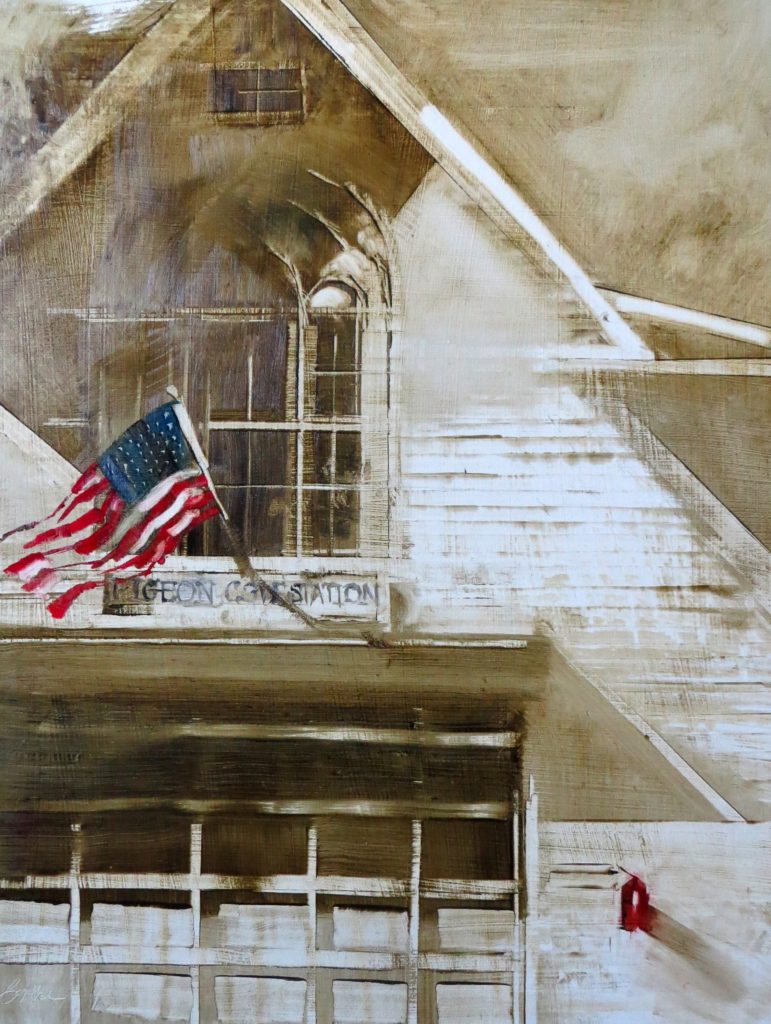
Beth Bathe (www.facebook.com/BathePainting) had been painting with traditional oil colors and creating high-chroma figurative and landscape paintings. She then became aware of the work of Vermont artist Charlie Hunter, who champions Cobra brand water-mixable oils, and she took a workshop with Hunter to learn more about the medium and his graphic style of painting.
Since switching to water-mixable oils, Bathe has established a procedure of working on Gessobords, birch plywood, or hardboard panels sealed with multiple layers of acrylic gesso that she tints with a small amount of transparent yellow ochre acrylic paint. Those panels range in size from 8 x 16 up to 18 x 24 inches. The exception is that she painted on a 24 x 36-inch panel during the 2017 Plein Air Easton event.
Her palette includes Cobra water-mixable raw umber, ultramarine blue, transparent red oxide, titanium white, titanium buff, with secondary colors yellow ochre, cadmium yellow, cadmium red light, permanent green light, violet, grayish blue, and sometimes cadmium orange.
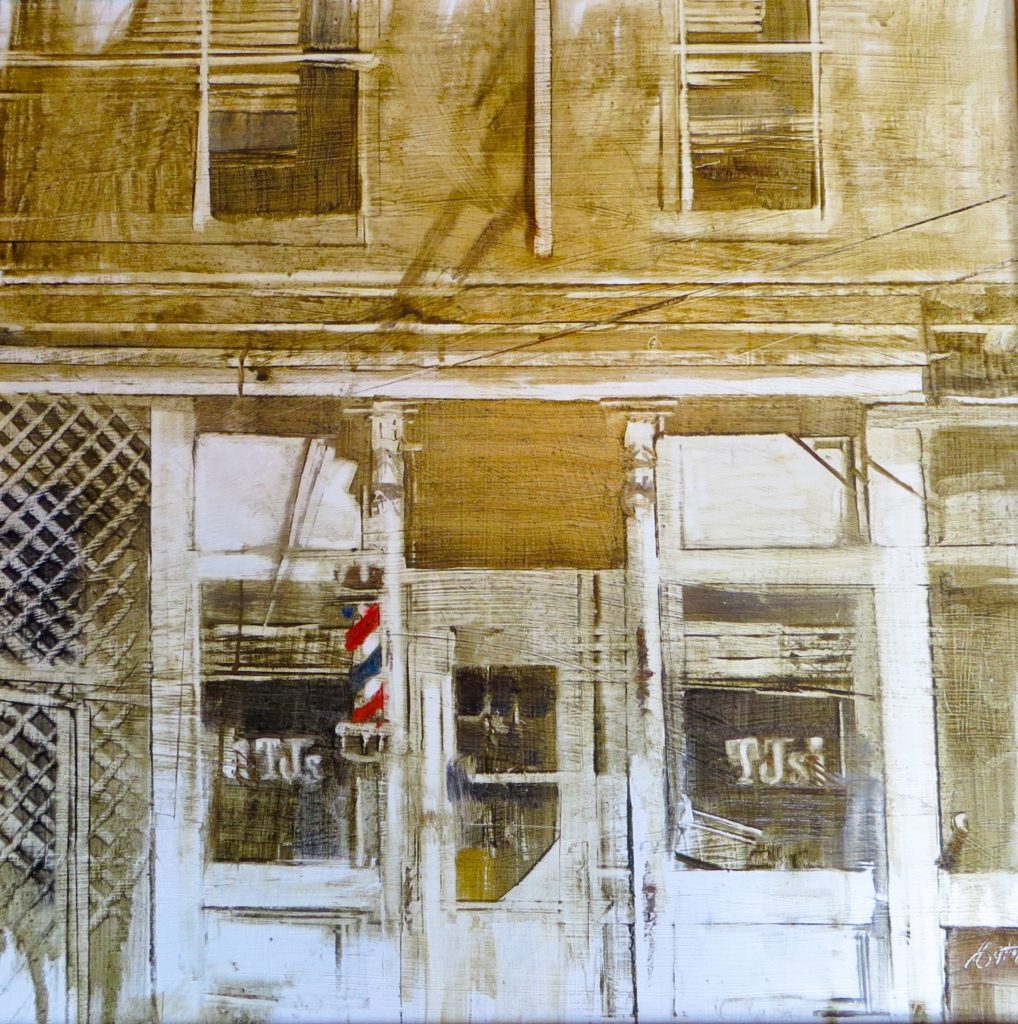
Before she begins painting, Bathe coats the surface of her board with a small amount of oil (water-mixable safflower oil) to make it easier to take paint off, even to the point of restoring the white of the substrate. Another technique that helps her lift paint off the panels is to lay a light mist of water over the applied paint using a spray bottle in the same way a watercolorist would to direct paint to flow down a sheet of paper. And if she decides to blot the dripping paint with paper towel, she can add textures that suggest leaves or other natural forms.
Because of her strong drawing skills, Bathe doesn’t need to make detailed preliminary drawings before starting to put paint on her panels. “I like what happens when I apply the first washes of diluted color,” says the artist. “I want there to be drips and splashes I can carve into with brushes, Q-tips, paper towels, and other tools. The process of adding and subtracting paint takes me to places where the painting needs to go. The paint takes on a naturalness with its own organic, flowing, dripping qualities. In the end, many finished paintings have the look of tinted photographs because the main image is rendered in warm sepia and enhanced with veils and spots of local color.”
Painting Demonstration with Water-Mixable Oils: Pipkas Cottage
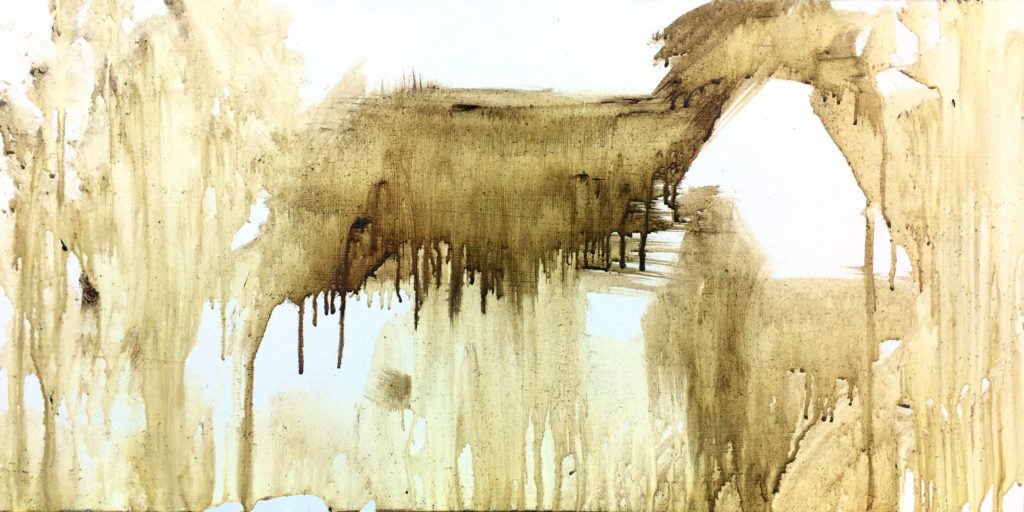
Step 1:
After determining the crop of her subject, Beth Bathe mixed a thin wash of raw umber (Cobra water-mixable oil) and water. She used an old 1 1/2-inch chip brush to block in large masses on her prepared gesso board covered with a light coating of water-mixable safflower oil. This oil base creates a barrier between paint and substrate, allowing her to take paint off the panel more easily and preventing staining of the white panels. She allowed paint drips and random strokes to help define the composition.
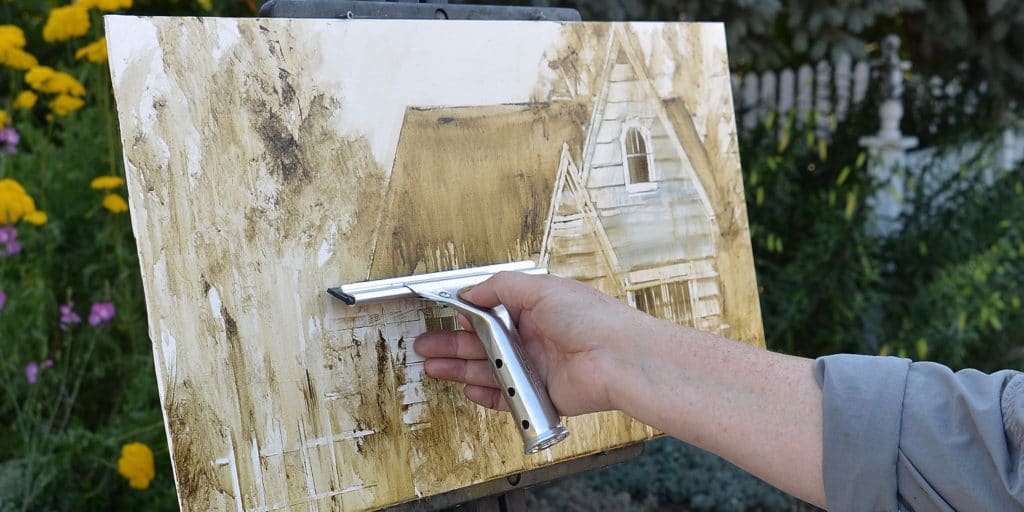
Step 2:
The artist begins to take away areas of paint, using paper towel, squeegees, and cotton swabs to draw/carve out her subject. She adds more transparent paint with flat synthetic brushes. Keeping to a very tonal palette, she might add ultramarine blue or transparent red oxide to cool or warm an area.
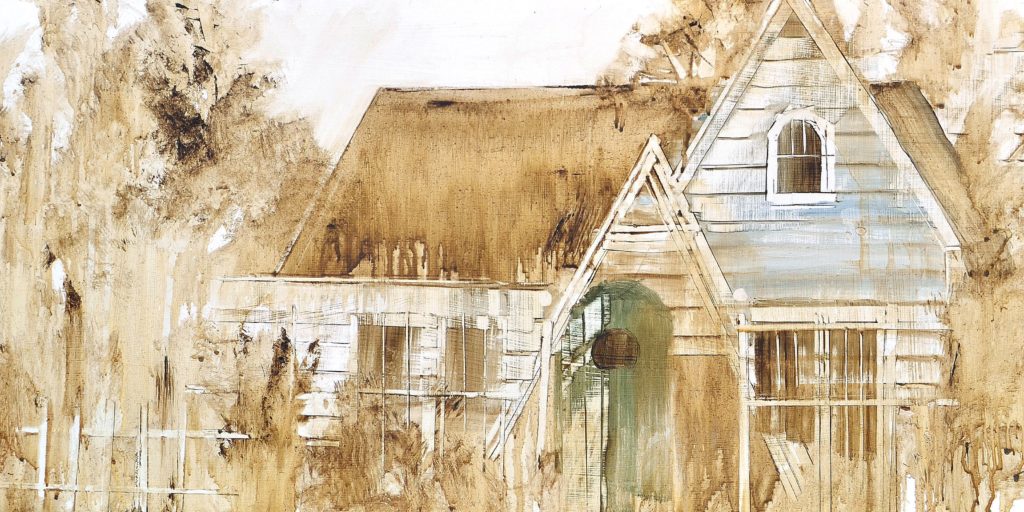
Step 3:
More detail added, such as the window trim and spots of color. The white picket fence is added by just touching a rubber squeegee to the paint, lifting off the raw umber. Some of the original paint drips and random strokes were left in their original state becoming trees or bushes.
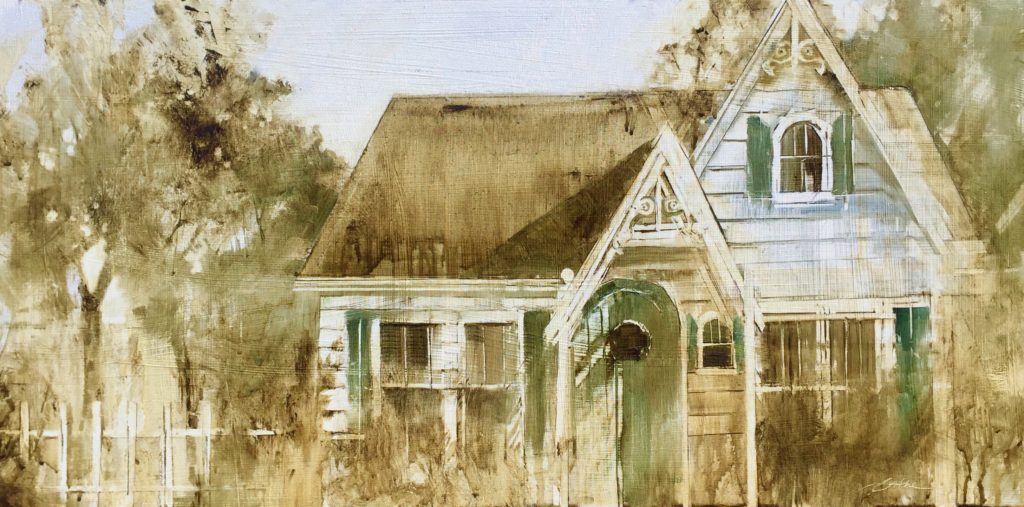

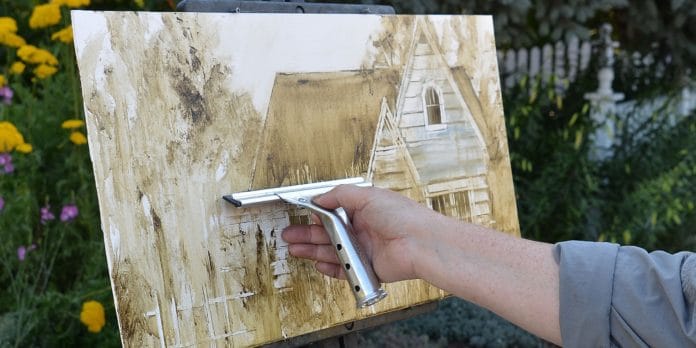



I’ve been using the Cobras for almost 4 years now and love them. They are very versatile. I can’t imagine going back to traditional oils and solvents.
I have use a full set of of Windsor newton Artisan water soluble oils, can I combine cobra colors with them ?Thanks.
Hi Nancy … I use 3-4 different brands of water mixables with no issues whatsoever.
I began using the Daniel Smith Water Soluble oil colors and mediums last year and they work very well. Great texture and pigmentation. I’ve used them on canvas panels and gessoed panels with no problems.